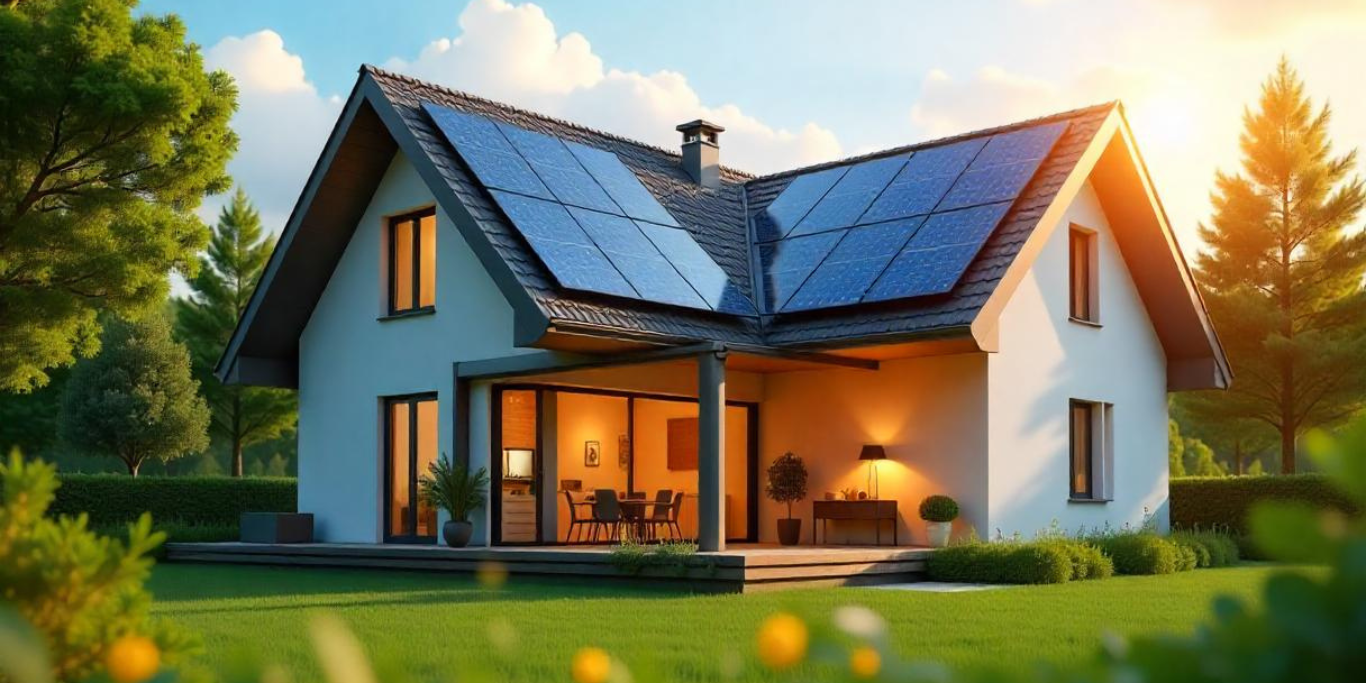Energy Consumption and Self-Consumption: Your Complete Guide to Smarter Energy Use
As the world moves towards cleaner, more efficient energy systems, how we use and produce electricity is becoming more important than ever. For homeowners and businesses alike, reducing energy consumption is not only a way to cut costs, but also a key step in building a more sustainable future.
One of the most powerful tools to achieve this is self-consumption—a concept that puts energy control back in your hands. In this guide, we’ll explore everything you need to know about energy consumption, electricity self-consumption, collective self-consumption, and practical ways to transform your energy habits.
What Is Energy Consumption?
Energy consumption refers to the total amount of energy used in a home, building, or industrial process. It includes everything from running appliances to heating water, powering lights, and charging devices. The more energy we consume, the higher our electricity bills and environmental impact.
But consumption is not just about how much energy you use—it’s also about when, how, and where it’s used. That’s where concepts like self-consumption come into play.
Understanding Self-Consumption: What Does It Really Mean?
To define self-consumption, think of it as producing your own energy—usually via solar panels—and using it directly in your home or business instead of relying solely on the electricity grid. This reduces your dependence on energy providers and lowers your electricity bills.
Self-consumption works by:
- Generating power (most commonly through solar energy),
- Using that energy immediately, or
- Storing it for later use with batteries or virtual systems.
This approach is increasingly supported by Spanish regulations, making it more accessible and cost-effective than ever.
Electricity Self-Consumption in Practice
How Does Electricity Self-Consumption Work?
Electricity self-consumption involves producing energy (typically solar) and using it in real-time. During the day, your solar panels generate electricity, which your home or business consumes directly. If there’s excess production, it can be stored or exported to the grid (depending on your setup and tariff agreement).
With Evergreen Eléctrica, you can also benefit from virtual batteries, allowing you to “store” energy without physical batteries, by tracking your contributions to the grid and drawing them later.
Why It Matters:
- You reduce your reliance on fossil fuels.
- You stabilize your monthly expenses.
- You make better use of your own resources.
Want to see how this connects with energy efficiency strategies? Check out our guide:
👉 Effective Ways to Save Electrical Energy at Home
Collective Self-Consumption: Energy Sharing for Communities
What Is Collective Self-Consumption?
Collective self-consumption allows several users—such as neighbors in an apartment block—to share energy from a common solar installation. Instead of each home having its own panels, the entire community uses one shared system.
This is ideal for:
- Urban buildings
- Housing developments
- Small towns or cooperatives
By managing energy collectively, everyone benefits from economies of scale, shared infrastructure, and improved access to renewable energy.
Benefits:
- Lower setup costs per household.
- More efficient use of space and production.
- Shared commitment to sustainability.
At Evergreen Eléctrica, we offer tailored solutions for communities interested in going solar together, making it easier than ever to transition to shared clean energy.
How to Reduce Energy Consumption Through Self-Consumption
The path to reducing your energy consumption isn’t just about cutting usage—it’s about changing how you consume energy. Here’s a breakdown of how to achieve it:
1. Install a Renewable Energy System
Solar energy is the most accessible form of renewable power for homes and businesses in Spain. Installing solar panels is the first step toward self-consumption.
2. Monitor and Optimize Your Usage
Use smart meters or apps to track your energy patterns and adjust usage during peak production times.
3. Take Advantage of Energy Storage
Batteries—or Evergreen’s virtual battery service—let you store energy for night use or cloudy days. This boosts your self-consumption rate and reduces reliance on external electricity.
4. Align Usage with Solar Production
Run energy-intensive appliances (like dishwashers or washing machines) during daylight hours when your system is generating the most power.
💡 Want to Take Full Control of Your Energy Costs?
Understanding how to reduce consumption is only one part of the picture. Knowing how energy costs are calculated can help you save even more.
👉 Read more: How to Calculate Electrical Energy Cost and Save on Your Bills
Is Self-Consumption Worth It?
Absolutely. The benefits of self-consumption go far beyond cost savings:
- 🔋 Energy independence: You’re no longer at the mercy of rising market prices.
- 🌍 Environmental impact: You reduce emissions and support clean energy.
- 💸 Financial benefits: With lower bills and possible compensation for surplus energy, you recover your investment faster.
- 🏘️ Community resilience: With collective self-consumption, entire neighborhoods can transition together.
Conclusion: Rethinking Energy Consumption Starts with You
Reducing energy consumption is no longer just a matter of turning off the lights—it’s about generating your own power, using it wisely, and building a better energy future. Whether through electricity self-consumption, collective self-consumption, or by simply understanding how to define self-consumption, you have more control than ever before.
At Evergreen Eléctrica, we’re here to help you make the most of that control—through personalized solar solutions, energy-saving tips, and advanced storage technologies.
👉 Contact us today to learn how self-consumption can reduce your energy consumption and increase your energy independence.
Stay Informed and Save Energy!
Want to keep learning how to reduce your energy consumption and make the most of self-consumption solutions? Explore our blog for expert tips, in-depth guides, and the latest innovations in home and community energy use. Whether you’re looking to cut costs, boost efficiency, or embrace sustainability, we’ve got practical strategies to help you take control of your energy future.










